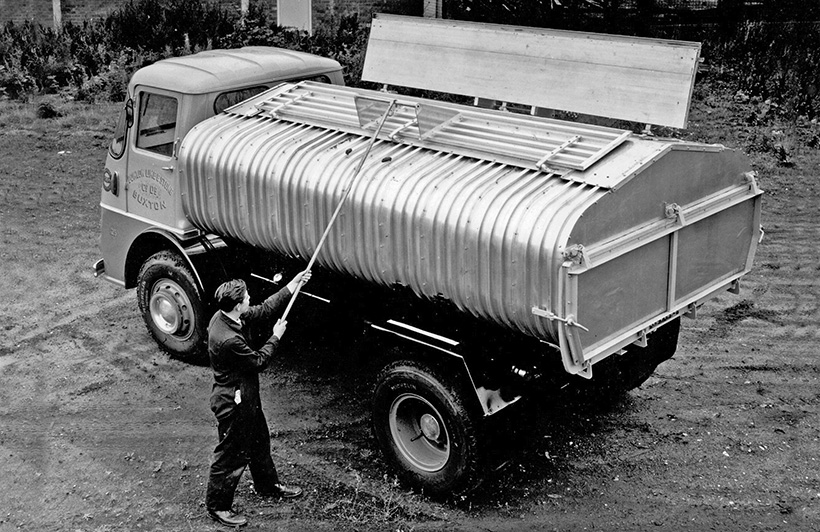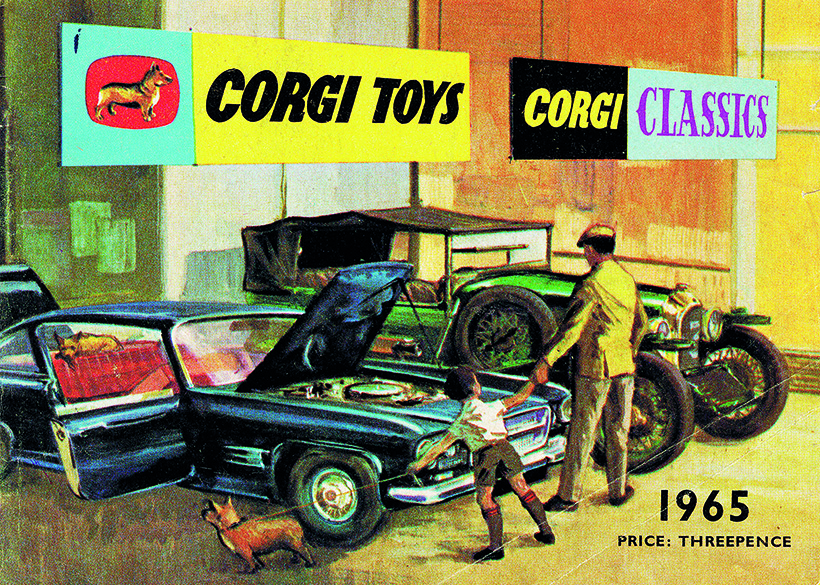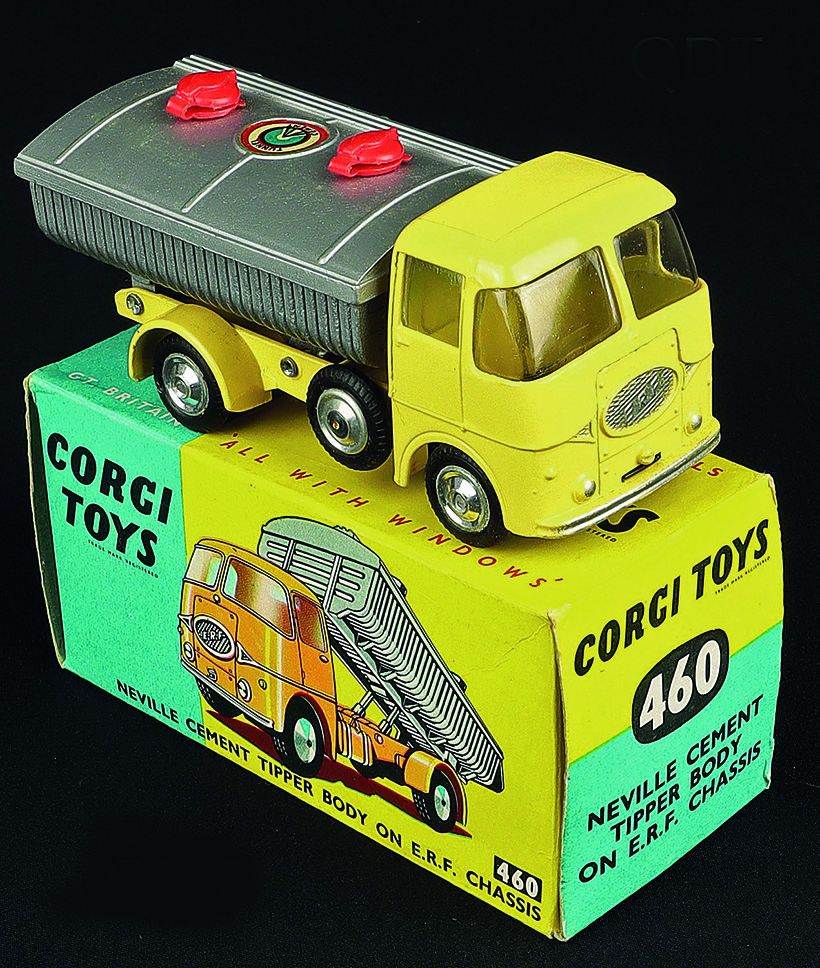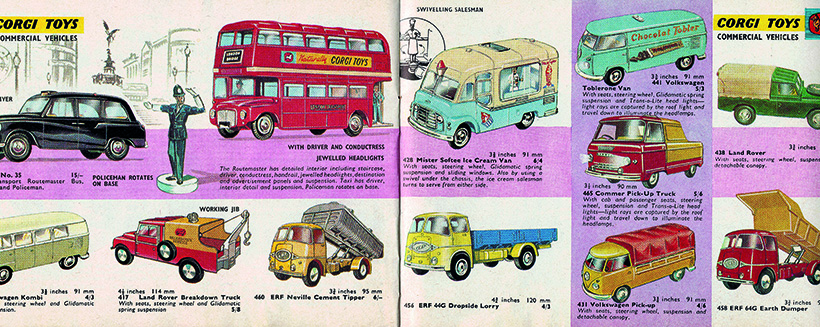ERF 44G tipper
Posted by Chris Graham on 12th August 2021
Malcolm Bates recently found a period black and white print of a rather special ERF 44G tipper in an old file and, well, it got him thinking.

Here’s the print I found, of an ERF 44G tipper fitted with an aluminium body and a ‘KleerView’ cab.
As none of the current crop of BBC presenters seem able to er, ‘present’ the modern-day road transport industry in a positive light (although recent events in Dover have stressed how vital it is to our everyday lives), it’s highly unlikely that they’d ever understand why a bunch of old blokes like us, spread throughout the country, are interested in old lorries.
But to paraphrase former Tory Prime Minister Harold MacMillan, those of us who are interested in old lorries (and yes, buses too), “Really have never had it so good.” Seriously. Look at all the magazines we’ve got available today… The Interweb thingy… High-resolution scanners… Oh, and our Vintage Roadscene Archive series, of course… Equally useful to any enthusiast – even if they are the bane of any professional photographer’s life – are cheap, Chinese mobile phones that produce such a good image in just about any light, you only need a pulse to be able to get a half-decent picture.
Except… Those pictures don’t physically exist. And unless you go to a great deal of trouble and expense, you can’t readily print a ‘proper’ photograph from a digital image. This partly explains why ‘old technology’ like my box-full of worn-out Olympus cameras are worth more by the minute. But it should also be a warning to us all as, in 10 year’s time, we might not be able to look at the photographs we took 10 years ago because the technology will no longer exist to retrieve them. In contrast, prints taken from negatives, then stuffed into a tin in the bottom drawer of your office/man cave/shed, will be there for ever.

Now, I’ve no idea how the whole technology thing will affect the storage of archive material in the future but, my own experience with a) VHS/Betamax video players and, b) Applemac computers, should be a warning. Y’see, each time I buy a new computer, it doesn’t have the capability to ‘see’ older word-processing programmes. Example? In the early 1990s I think my first Mac used ‘Appleworks 4.5’. My current computer had to be specially ‘backdated’ in order to work on ‘Appleworks 6’, because I can’t stand all the on-screen gizmos and complexity of later versions, but also because, as purchased, it wouldn’t have been unable to open any of my earlier files. What’s it at now? ‘Generation 10.6’? See where I’m coming from?
History behind the history?
Sure, you can lift a lot of stuff off the Interweb. But what you don’t get is the… how can I describe it? The history behind the image like you do with a proper, period photograph. Or more to the point, the reverse side, complete with scribbled note in pencil and maybe the official photographer’s stamp to confirm the location where it was taken.
To illustrate my point, here’s an example of ‘old technology’ I’ve just found in a tin. As you can see, it was an aluminium tipping body mounted on an ERF 44G chassis, complete with ‘KleerView’ cab. The chassis hadn’t been registered, so we can assume that the shot was taken in the bodybuilder’s yard. The customer was the Dowlow Limestone Company, which you’ll be amazed to discover still exists although, today, it’s part of the Breedon Group.
So, why am I so excited about this rather ordinary photograph? Well, partly it’s because I’d discovered it together with a load of other pictures purchased at auction but, also (for a brief moment), because I thought I’d discovered the ‘prototype’ of the famous (although in ‘play value’ terms, totally useless) Corgi Toys Number 460; the yellow and silver ‘ERF Neville Cement Tipper’.

Yes, I know the cab is wrong. And yes, I now see that a body designed to carry limestone is slightly different to the one built by Neville to carry cement powder. But was this body also built by George Neville & Son Limited at the Nottingham Road works, in Mansfield? Or another bodybuilder keen to utilise the weight-saving properties of aluminium? No idea, but if nothing else, it confirms the ‘diversity’ of the British commercial vehicle industry in the 1950s and ’60s, doesn’t it?

How diverse? Well, more than 300 companies were listed under ‘commercial vehicle bodybuilders’ in one of my trade directories from the era. Three hundred! But then, the same directory also listed 31 chassis manufacturers of commercial vehicles. Yes, really. Those were, indeed, the days!
For a money-saving subscription to Vintage Roadscene magazine, simply click here





